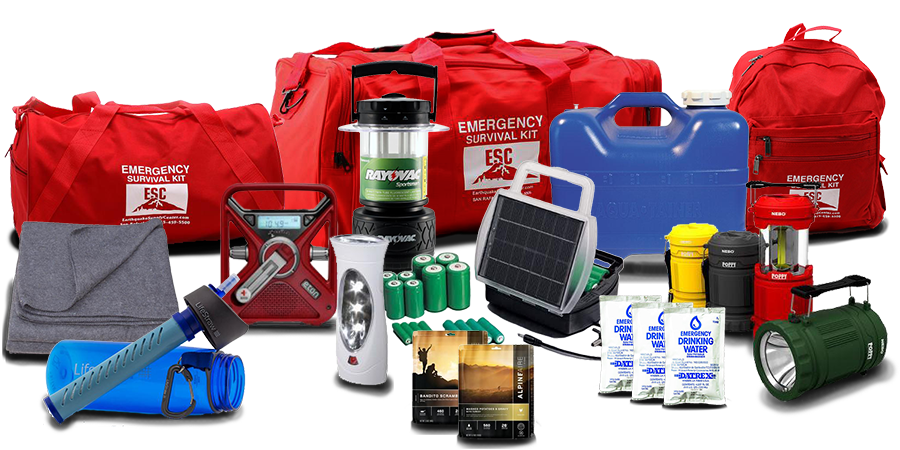Get prepared today!

Creating a Safety & Survival kit can be easy. The most important supplies in a survival kit are water, food, and warmth. These essentials, combined with a safe environment, will allow you to survive many days in the wake of an emergency or natural disaster.
"If you stay safe, you will survive."
All our survival kits include these items in various forms depending on the kit. To see the differences in kits, check out our survival kit comparison chart. Plus we have items designed for specific natural disasters, wilderness survival, and pets.
Check out our group survival kits.
All our survival kits provide supplies for up to three days and can be further customized for any disaster with:
Water – The most essential item needed for survival is water. You can be prepared with:
A person can survive on 16 fluid ounces of water per day. This translates to 4 pouches or 1.5 cans. Of course, that's well short of 8 glasses, so be sure to pack extra water.
Heat and Warmth – Hypothermia and low body heat can kill. It can also make you unable to care for others. Provide warmth with:
Power and Communications – If there's a chance you could be without power, be ready with:
For more information about what to include in a survival kit, check out the Department of Homeland Security recommendations.